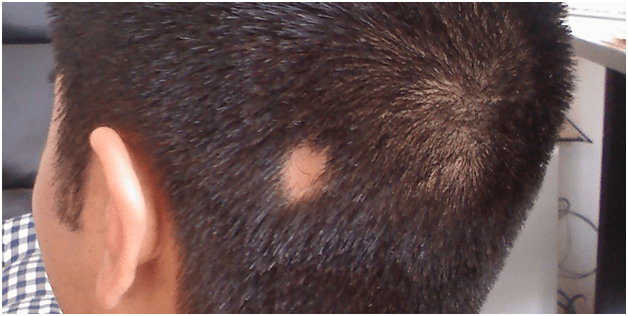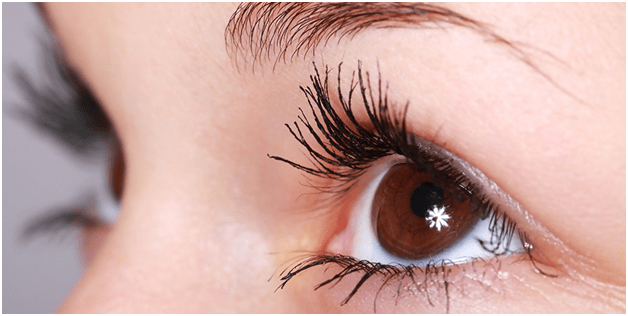
Alopecia is the general term for hair loss in an area that was initially hirsute. A subject that is most feared – hair loss keeps on troubling men and women with each passing day.
Although the causes of alopecia are numerous, one cause particularly stands out – alopecia areata. What is it? What are its symptoms? How is it diagnosed?
Read on and find out more as we explore the details of alopecia areata:
What is alopecia areata?
Alopecia areata is an autoimmune disorder causing air loss. The pattern of hair loss caused by this condition is often described as non-scarring hair loss. This simply means that it causes hair loss but doesn’t lead to scarring of the regions where hair has been lost.
Hair loss due to alopecia areata can occur at any age but usually begins in childhood. Since it is a disease of the hair follicles, the manifestation of alopecia areata is not only limited to the scalp. If you have this disorder, then you can experience hair loss in any part of the body with hair.
With alopecia areata, it is not uncommon to experience loss of hair on your beard, in the eyebrows, eyelashes, limbs and the rest of the body. The classic presentation of alopecia areata are small, coin-sized, and round patches of baldness on the scalp.
Nevertheless, occasional large presentations such as the involvement of the whole scalp can occur. A rare case where the entire body is affected can also occur. When this happens, it is referred to as alopecia areata universalis.
If you are suffering from alopecia areata, it is not easy to predict how much hair you will lose. Moreover, regrowth of hair may take from a few months to years to be successful – though the outcome is not always guaranteed.
The fact is that, when only a few hairs have been lost, then your chances of regrowth are way better. Small patches can be recovered fully within a year. When more than half of the hair has been lost, then the chances of complete recovery are always very slim.
What Causes Alopecia Areata?
Studies are still not conclusive on the root cause of alopecia areata. However, the mechanisms leading to its manifestation are contributed to by the immune system mediating a response on the hair follicles.
The immune system is the natural defense system of the body. It chiefly protects against foreign invaders such as bacteria, fungi, viruses, and protozoa.
Usually, the immune system is programmed not to attack healthy cells. But in alopecia areata, somehow this mechanism is faulty, and the immune system attacks hair follicles. The response then recruits mediators of inflammation which subsequently cause hair loss.
What has not been fully elucidated by studies is why the immune system would attack the hair follicles. Something that has also always puzzled researchers is why only localized areas are affected and why the lost hair usually regrows, especially when the scalp is stimulated with topical solutions like minoxidil, which is FDA approved and you can read more about it here.
Being that alopecia areata is an autoimmune disease, it is very likely for someone with this disease to contract other autoimmune disorders such as vitiligo, diabetes, thyroid disorders, and lupus. The risk is low, but they are more likely to occur when compared with individuals who don’t have alopecia areata.
Studies on the epidemiologic and genetic characteristics of alopecia areata show that there is a possible genetic predisposition to alopecia areata. Although most cases of alopecia areata are sporadic, there is increasing evidence that alopecia areata is a complex multigenic trait with up to 20% of the affected individuals exhibiting a family history of alopecia areata.
Symptoms of Alopecia Areata
The symptoms of alopecia areata are mostly subtle. The concerns are usually for cosmetic and aesthetic reasons. However, you can experience tingling sensations in your scalp which are uncomfortable.
When alopecia areata causes loss of your eyelashes, several conditions of the eye can set in. This is chiefly because eyelashes are protective to the eye against dust, small pebbles, and several other environmental debris.
Your eyes may also be predisposed to xerophthalmia, conjunctivitis, and soreness especially when the environmental conditions are windy or dry.

Alopecia areata typically starts as few patches of baldness on the scalp. The spots are neither inflamed nor scaly. They are also without scars.
What you should understand is that this type of alopecia mostly affects pigmented hair. As a result, certain white hairs may be left standing in regions where pigmented hair has been lost and is common among older people who have started growing white hair.
Occasionally, the hair loss may not be well circumscribed as you would expect. Instead, they may be diffuse with short tapered hairs that are characteristic of alopecia areata.
People with alopecia areata usually regrow back their hair. The regrowth often starts with fine and white hairs at the center of each patch. The hairs will thicken with time and will also regain its pigment.
How to Diagnose Alopecia Areata?
The diagnosis of alopecia areata is based on both physical and lab-based evidence. Usually, your dermatologist will make a diagnosis for alopecia areata by just examining your hair loss.
Before a diagnosis is made, the doctor will start by taking a history of the patient. This is when your doctor will determine the duration of your complication, any pieces of evidence of heredity such as family history of hair loss, and medical history to rule out the possibility that your hair loss is caused by side effects of the medications you are taking.
The next step is to examine you and rule out other causes of hair loss, including but not limited to, fungal infections, and medical causes such as chemotherapy.

At face value, short tapered hairs are characteristic of alopecia areata. Your dermatologist will then examine the patches in your scalp. If the hair loss seems to be expanding, the doctor will extract/ pull out a few hairs and send to the laboratory for examination.
Instead of using your hairs, your doctor may obtain a biopsy of the skin in regions affected by alopecia areata to confirm the diagnosis.
When the microscopy at the lab reveals that the hair follicles have an unusual infiltration of cells of the immune system, then that is enough to raise suspicion.
Further investigations will not reveal the presence of immune cells but will also indicate that these cells are destroying the hair follicles.
This finding confirms that the reason for your hair loss is an autoimmune disorder which fits the diagnosis for alopecia areata.
Treatment Options for Alopecia Areata
Treatments depend on whether the alopecia is mild or extensive.
Treatments for mild alopecia:
1) Intralesional corticosteroid injections
This is by far the most common treatment method for alopecia areata. It involves the injection of corticosteroids into the bare areas of skin that are affected by hair loss. The injection is done using a needle by a dermatologist and is usually repeated every four to six weeks.
2) Topical minoxidil
Depending on the instruction from your dermatologists, you can apply 5% topical minoxidil gel once or twice daily to improve the growth of hair. However, studies now reveal that 5% minoxidil and 2% minoxidil aren’t effective except when used in combination with other topical corticosteroids.
3) Topical corticosteroids
The mechanism of corticosteroids in the treatment of alopecia areata is merely to reduce the inflammatory responses around the hair follicle. Besides, as much as 25% of hair growth has been observed when highly potent corticosteroids are used.
Treatments for extensive alopecia:
1) Oral corticosteroids
Oral corticosteroids are often administered in severe cases of disease to suppress the progression of the disease. It is administered when the scalp has suffered extensive hair loss to help suppress the disease process and regrow hair.
2) Topical immunotherapy
This treatment is indicated for alopecia universalis, alopecia totalis, and extensive alopecia areata. It involves the application of chemicals to the scalp. These chemicals then induce allergic rash which then alters the immune system. The chemicals commonly used include diphencyptone, squaric acid dibutyl ester, and dinitrochlorobenzene.
3) Immunomodulators
These are new drugs that are still in the testing stage for the treatment of alopecia areata. They were approved to treat disorders of the blood, though, they can also help reduce the symptoms of alopecia areata. The specific immunomodulators for alopecia areata are of the Janus kinase (JAK) inhibitors family. Examples include tofacitinib and ruxolitinib. Currently, there is no cure for alopecia areata. However, the treatments mentioned above can significantly help slow the disease and alleviate its symptoms.
Conclusion
Alopecia areata is a relatively common cause of hair loss. It is attributed to an autoimmune attack on the hair follicles. However, the exact cause is still not well understood. One thing for sure, curative measures are still not available. Though, the condition can be managed with contemporary medicine or natural home remedies. Other than for aesthetic reasons, it is doubtful that your alopecia areata will worry you. If you start experiencing any symptoms, then there could be a possibility that you are suffering from another autoimmune disorder. Always contact your doctor when you start noticing any changes in your health.
Author Bio:
 Bonnke Arunga is a senior medical student and an expert health writer. He is passionate about all areas of health but has a particular interest in dermatology and skin health, including treatment of hair loss. Bonnke holds Bachelors of Science and currently seeks for Bachelor of Medicine, Bachelor of Surgery (M.B.B.S.), from Maseno University. The author mostly contributes to Hairverse.com blog, covering various hair loss topics, from topical solutions to particular lifestyle tips.
Bonnke Arunga is a senior medical student and an expert health writer. He is passionate about all areas of health but has a particular interest in dermatology and skin health, including treatment of hair loss. Bonnke holds Bachelors of Science and currently seeks for Bachelor of Medicine, Bachelor of Surgery (M.B.B.S.), from Maseno University. The author mostly contributes to Hairverse.com blog, covering various hair loss topics, from topical solutions to particular lifestyle tips.















